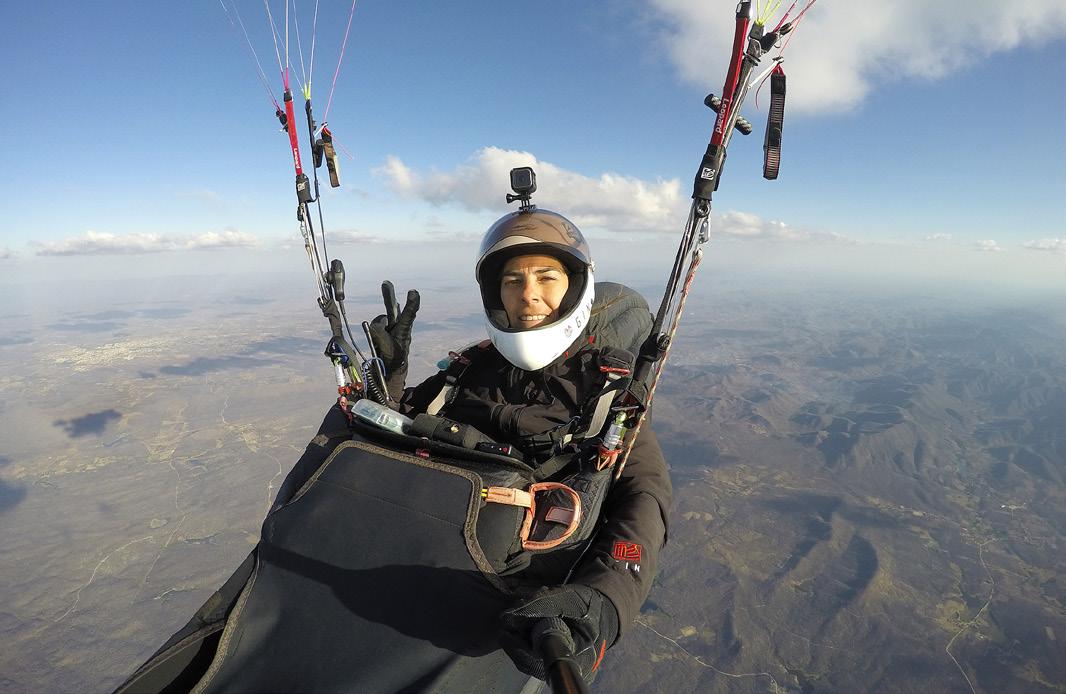DESTINATIONS
NORTHEAST BRAZIL
J
oanna Di Grigoli has spent several seasons in northeast Brazil, chasing records and personal bests. Whether foot-launching or towing, here’s her advice on getting the best out of your stay. 1. Do your research. Before you go, talk to pilots who have already been. If you don’t know anyone who’s been there, go to XContest or Leonardo and take a look at tracklogs to see what the usual routes are. I’ve superimposed my tracklogs from different years and I’ve seen I’ve thermalled in the same spots in the middle of the flats! 2. Prepare your kit so you can fit in food and lots of drinking water. I also recommend mixing powdered electrolyte solution with your drinking water – you’ll stay extra hydrated in the air and on the ground if you ever have to walk or wait in the heat. You’ll also feel much better the next day. You can find it in any pharmacy in Brazil in different flavours (my favorite is coconut!).
66
Bring food with you because you’re going to be in the air all day long. Dried fruit and local nuts like cashew and Brazil nuts work fine, or bring your favorite from home. 3. Wear a peeing device or diapers and use them! There’s a peeing device for women called the She-P (she-p.com) that works like a charm after some practice. You need to drink lots of water in flight and that water will eventually want to leave your body. So, salud! 4. Pick your launch time. Flying in Quixadá or Patú and Assu or Caicó is completely different, especially on when to launch. If you foot launch, get off as soon as you can before the wind gets too strong and wait until the base lifts before you turn around and fly downwind. If you tow, choosing the right time to launch is trickier because if you launch too early, you can end up on the deck at 7.15am and if the logistics don’t allow coming back to relaunch, your
CROSS COUNTRY TRAVEL GUIDE 2020 BRAZIL
day will be over. It all depends on your goals. If you’re there to break records, you’ll want to get off as soon as possible, but if you’re there to fly your first 200km or 300km, then it’s worth waiting for the right time. It will be more fun. 5. Team up. In Quixadá or Patú, a gaggle will form naturally as people wait for the right time to leave and that makes the first (and hardest) part of the flying a bit easier. But if you go towing, it’s worth teaming up with another pilot with a similar glider and towing at the same time so you can work together (and it’s more fun!). 6. Early in the morning, take whatever climb you find and don’t leave it! Usually, the wind is strong, and you’ll see the kilometres go by while you drift in that zero. The pace changes throughout the day: it’s slow early on, then full-on before noon, then there’s a pause at noon (stay high!), then full-on again and then there will be a lovely
























